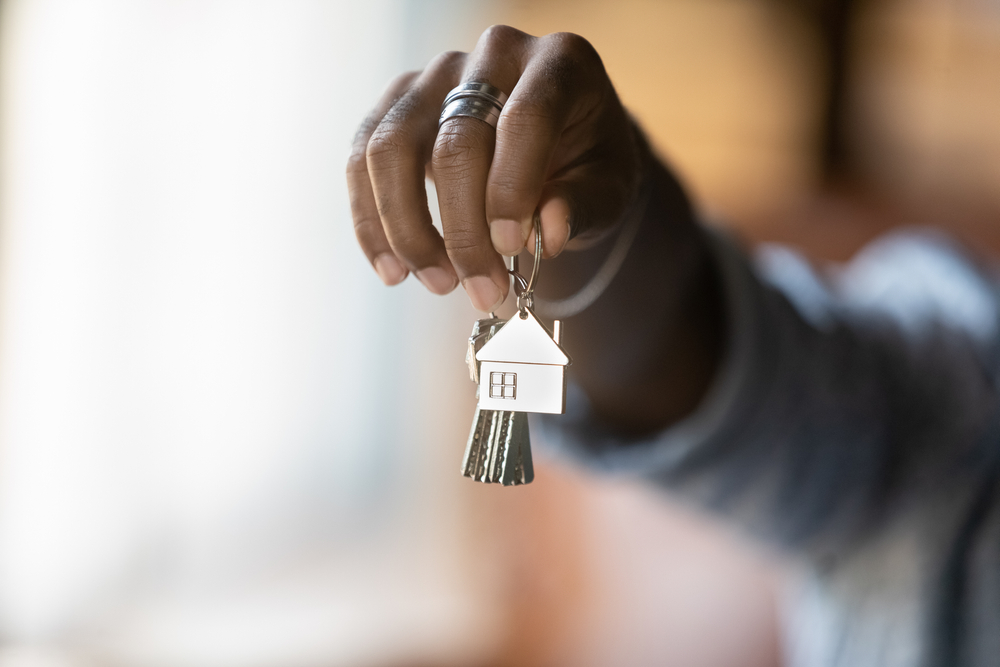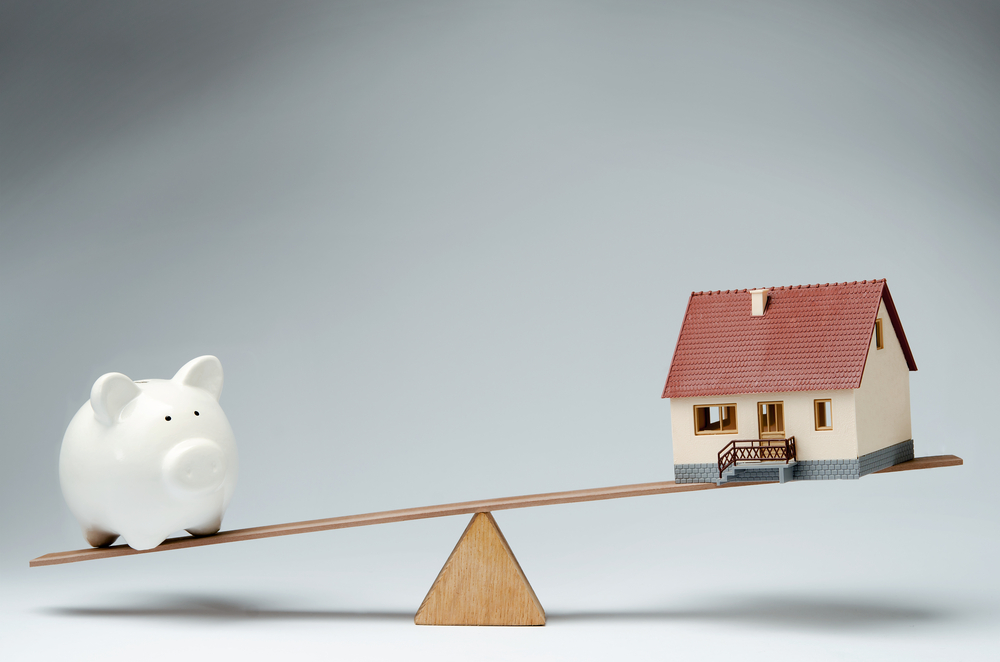How Old Is the Typical Homebuyer Now? The Answer May Surprise You

The American Dream used to be a simple picture: a house, a yard, and a place to call your own. But for millions of people today, that picture is fading. What was once a normal step into adulthood—buying a home—has become a goal pushed further and further into the future. The numbers tell a shocking story: in 1981, the average person buying a home was 31 years old. Today, that age has jumped to a record-breaking 56.
It’s the story of a dream put on hold, a finish line moved for an entire generation. This 25-year leap in age shows that the housing market has become a huge hurdle, changing the timeline of one of the biggest moments in life. To understand this, we have to look at how the rules of the game have changed and how the flow of money is reshaping all of our lives.
The Race Against Soaring Home Prices

The heart of the problem is a simple, hard truth: the cost of a house has grown much faster than people’s paychecks. For a long time, there was an unwritten promise that if you worked hard, you could afford a home. That promise was real because home prices and incomes used to rise together. That connection is now broken.
From 1985 to 2024, the median price of a U.S. home shot up by 403%, but household income only grew by 252%. This growing divide is what experts call “the great decoupling.” It means that for the average person, a home is financially slipping out of reach. In 1984, it took a family about 3.6 years of their total income to buy a typical home.
By 2024, it took 5 full years of income. That gap has turned the first step toward homeownership into a giant leap over a canyon. The constant struggle to save for a down payment that seems to grow every year can be incredibly discouraging.
You might hear that today’s mortgage rates are low compared to the 1981 average of 16.64%, but that hides the real problem. The challenge isn’t the cost of the loan anymore; it’s the cost of the house itself. The new mountain to climb is saving up for a massive down payment on a home with a sky-high price tag. A 10% down payment in 1981 was less than $7,000; today, it’s often over $40,000. Saving up that kind of cash is incredibly difficult when wages aren’t keeping up with the soaring cost of everything. And because home loans are so big now, even a tiny change in interest rates can add hundreds to a monthly payment, wiping out a buyer’s budget in an instant.
Crushing Weight of Modern Burdens

On top of high prices, younger generations are carrying a financial weight that their parents never had: student loan debt. It’s an anchor holding millions of people back from owning a home, a heavy backpack they carry into their adult lives long after they’ve left the classroom. It’s a triple threat that systematically dismantles the dream of homeownership: it eats up savings needed for a down payment, it can damage a person’s ability to qualify for a mortgage, and it forces them to delay the major life milestones that usually lead to buying a home.
The impact is huge and deeply personal. With a typical balance of $30,000, 51% of people with student loans say their debt has forced them to put off buying a home. That monthly payment is a direct roadblock to saving. For aspiring buyers, 40% pointed to student loans as a key reason they couldn’t save. Think about it: a payment of a few hundred dollars a month adds up to thousands of dollars a year that simply cannot be put toward a down payment.

This debt also directly affects your ability to get a mortgage in the first place. Lenders look closely at your “debt-to-income” ratio—how much of your monthly income already goes toward paying debts. If that ratio is too high because of student loans, you are seen as a bigger risk, and they are less likely to approve a home loan, or they will approve you for a much smaller amount.
This constant financial strain then creates a powerful domino effect, pushing back marriage and parenthood—the very events that often provide the motivation to settle down and buy a first home. When you are struggling to make ends meet, the idea of starting a family or planning a wedding can feel like an impossible luxury. By postponing these key life moments, the need for a family home is also postponed, creating a cycle of delay. It’s a prolonged state of financial limbo that fundamentally changes what it means to be an adult today, forcing a generation to rent for longer while their chances of building wealth through homeownership slip further away.
Too Many People, Not Enough Homes

Even if you can get past the financial hurdles, another huge problem is waiting: there simply aren’t enough homes for sale. This isn’t a temporary dip in the market; it’s a long-term shortage caused by deep-rooted trends.
A big part of the problem is that older generations, especially Baby Boomers, are staying in their homes longer. A 2024 survey found that 43% of Boomers say they will never sell. Many are “locked in” by the low mortgage rates they got years ago. It doesn’t make financial sense to sell a home with a 3% mortgage and buy a new one at 6% or 7%. This keeps an estimated 1.6 million homes from ever hitting the market.
This bottleneck is made worse by the fact that we haven’t built enough new houses for over a decade. After the 2008 financial crisis, construction slowed to a crawl and never really caught up with our growing population. We now have a nationwide shortage of 3 to 5 million homes. With more people competing for fewer houses, prices naturally shoot up. The problem is often worsened by local rules, called zoning laws, that make it illegal to build smaller, more affordable homes like duplexes or townhouses in many areas, cutting off the supply of starter homes before a single brick is laid.
Who Can Still Buy a Home?

Because of all these pressures, today’s housing market works best for one of type of person: someone who is older, wealthier, and already has a financial head start. First-time buyers, who bring new energy into the market, are being left behind. They now make up only 24% of all home sales—a huge drop from the historical average of nearly 40%.
This has created a stark generational divide. Baby Boomers (ages 60-78) are the biggest group of homebuyers, making up 42% of recent sales. Millennials (ages 26-44), the largest generation in the country, account for only 29%. Older buyers often use the money from selling their previous homes to get a leg up in the competition. As one expert, Jessica Lautz, put it, Baby Boomers and retirees are “the winners in today’s housing market.” This creates a cycle where wealth helps create more wealth. If your parents owned a home, you have a better shot. If they didn’t, you’re often left struggling. The classic image of a young family buying their first home is also changing. In 1985, only 42% of home-buying households were child-free. Today, that number is a record 73%.
A Foundation for the Future

These numbers paint a tough picture, but they don’t have to be our destiny. The dream of a stable home: a place to belong, build a family, and feel secure is too important to let it become a memory. To bring it back, we need more than just wishful thinking. We need a new way of looking at the problem and the courage to act together.
The solution isn’t to choose between building more homes or helping new buyers; it’s to do both, urgently. We need to change the local rules to allow for more types of homes to be built, especially smaller, more affordable starter homes. We have to make it simpler and faster to get those homes built. At the same time, we need to expand programs that help people with down payments, giving a hand up to a generation that has been shut out.
A home is more than just a financial investment; it is the foundation of our lives, our families, and our communities. Making sure that foundation is strong and available to everyone is one of the most important challenges we face. The question isn’t whether the dream is changing, but whether we have the will to rebuild it for a new generation. What kind of future are we willing to build, and what part will you play in making it a reality for all?
Loading...

